Can Scent-Generating AI Technology Democratize the Notoriously Exclusive Fragrance Industry? – Latest Fashion Trends & Style Tips August 06, 2025 at 06:15PM
📰 Can Scent-Generating AI Technology Democratize the Notoriously Exclusive Fragrance Industry?
✨ Fashion Insights & Trends:
First came lab-grown diamonds; then there were "bio-leather" alternatives to the traditional material. Now, there's technology-generated fragrance. Meet Generation by Osmo, a company on a mission to "digitize scent" and democratize the famously opaque and lengthy fragrance development process.
Led by Founder and CEO Alex Wiltschko — an "olfactory neuroscientist" who previously worked for Google Brain and created Alphabet's olfaction group — Generation by Osmo isn't just another AI experiment. It's a lifelong passion project come to life, and it aims to bring transparency and unmatched speed to a rarified beauty category.
For decades, the fragrance industry has been dominated by the "big four" perfume-making conglomerates: DSM-Firmenich, Givaudan, IFF and Symrise. If you've bought a fragrance from Sephora or spent any time at a perfume counter, you've almost certainly encountered one of their creations, which include the most popular fragrances in the world. But crafting a scent with these conglomerates can take anywhere from several months to more than a year — and that's if you can even get a meeting.
Becoming a perfumer — or a "nose" — is even more difficult. The perfume industry is a notoriously expensive and exclusive club. It's highly competitive, often requiring a degree in chemistry and a sought-after acceptance letter from a French or Swiss school. With so many barriers to entry, perfumery is still a field dominated by (white) French men. It's difficult for newcomers to enter the category, and even more so for cash-strapped indie brands.
Related: What Does It Take for an Indie Skin-Care Brand to Expand Into Fragrance?
Wiltschko launched Osmo in 2022 with the intention of upending all of this. In 2025, the company established Generation by Osmo, an offshoot from the lab dedicated to commercializing the technology for the creation of fragrances.
"Today, there [are] only about 100,000 unique fragrances that have ever been made," the founder tells Fashionista. "I think there should be millions."
While there are plenty of tech bros who have gotten into the beauty business solely because they see how much their girlfriends spend on products, that's definitely not the case for Wiltschko. Fragrance is a lifelong passion of his that actually began in childhood. He recalls catching whiffs of Acqua Di Gio at summer camp and guessing spices by their smell at restaurants with his father as a kid; he eventually channeled that fragrance obsession into a PhD in olfactory neuroscience from Harvard. Now, he wants to give everyone the chance to infuse experiences, special moments and memories into unique, custom-created scents with Generation by Osmo's freshly launched AI-powered proprietary Olfactory Intelligence (OI) platform.
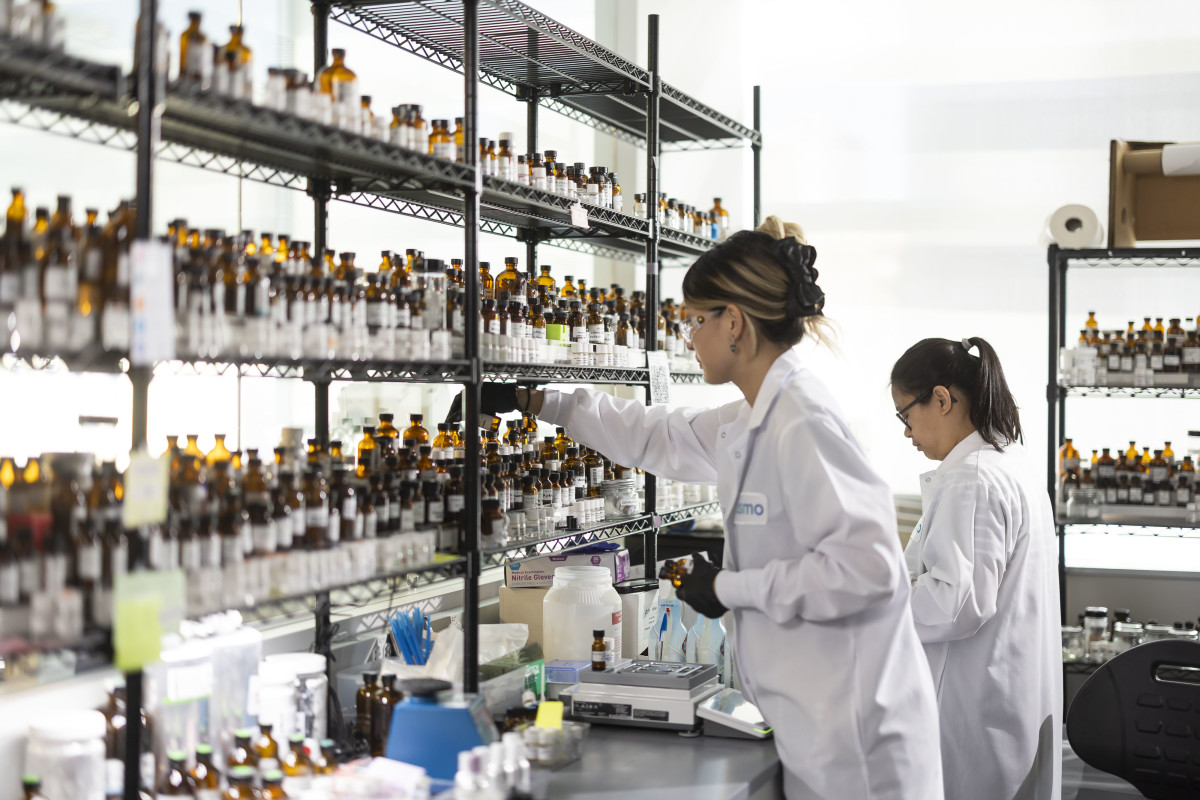
Photo: Courtesy of Generation by Osmo
The way the OI platform works is similar to using ChatGPT: Users can feed it a prompt, photo, memory or even a song to inspire a concoction. "Every conversation that has ever occurred about any product that's online and available freely, we analyze," explains Wiltschko. Then, the tech pairs that analysis with the company's research. Osmo has built AI models to predict the smell of molecules, "digitizing scents," and enabling machines and computers to detect a smell, map it, understand it and recreate it.
Wiltschko recently walked a small crowd of executives, influencers, perfumers and journalists through the creation process during an event at The Bowery Hotel in New York City. For the demo, the input inspiration he used was Bon Iver's "Haloscene," with notes of tomato leaf and tea. He then made selections from a list of customizable options, including "type of occasion," season and longevity to application, as well as texture, budget and even reference scents. Attendees could then actually take home the resulting scent Generation by Osmo created, dubbed "Golden Hour," in an accompanying bud vase filled with creamy white calla lilies, roses and Mount Everest alliums.
Related: How Does One Become a Perfumer?
"I had never smelled that kind of scent before," Wiltschko recounted later over the phone. "It didn't feel like I pushed a button and something randomly popped out. I was able to steer it, participate in the creation of it and I just find that to be so exciting."
The demonstration showed just how quickly the platform is able to offer a formulation (in a matter of minutes). Still, like with most creative pursuits attempted with AI, OI also needs a bit of human intervention: The resulting scent, of course, needs to pass the nose test. Osmo's in-house perfumers guide what the algorithm initially proposes into something that smells beautiful, exciting and unique.
On the team is master perfumer Christophe Laudamiel, whose osmography boasts fragrances for Tom Ford, Thierry Mugler, Burberry and Tommy Hilfiger. Wiltschko tells me that the perfumers use the OI platform "almost like a colleague," echoing phrasing executives often use when describing how AI can help, rather than replace, human members of the workforce. On Instagram, Laudamiel notes that, with Generation by Osmo's OI technology, "You get structures that I would have never thought of. I find this super exciting because I could not create so many structures, so fast for so many projects."
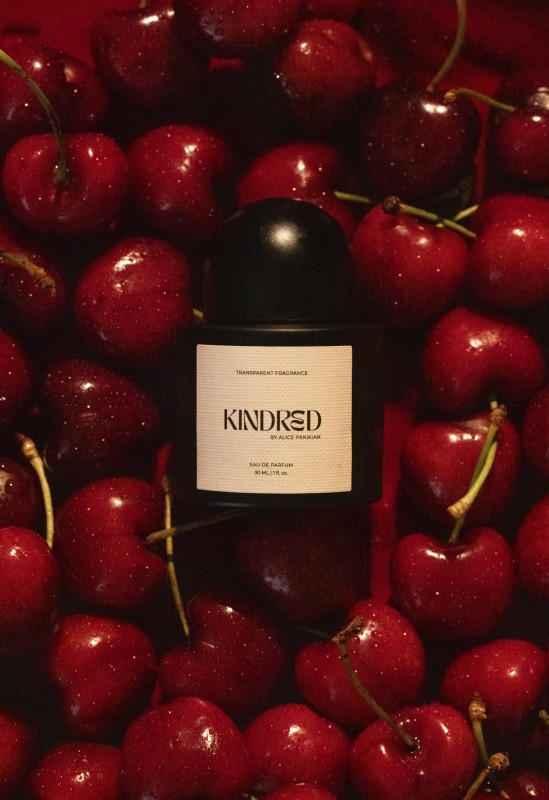
Photo: Courtesy of Generation by Osmo
While OI isn't available to individual consumers — at least not yet — brands and creators can contact Generation by Osmo to build a perfume and bring it to market, no experience necessary. Earlier this year, "clean" beauty creator Alice Panikian launched her debut fragrance, Kindred, which she had created using Osmo's OI. The genderless scent is "sharp yet tender, a dreamy mix of black cherry, vanilla and patchouli, with notes of Bulgarian rose, an ode to her late mother."
"I was actually working at Osmo and doing their social media at the time," she explains of how the partnership came to be. "I had a lot of ideas and they were very open to listening. I told them about my interest in fragrance and making something safe and transparent. I thought that it could be a disruptor in the fragrance space. To my surprise, they went with it."
Her pursuit of "clean" beauty began with her own health issues, during which she learned about the "fragrance loophole." Under the 1973 Federal Fair Packaging and Labeling Act, companies are required to list ingredients used in a perfume — except for fragrances that are considered "trade secrets." This means that perfume labels can exclude certain ingredients within their formulas, even if those ingredients include solvents, possible allergens, preservatives and dyes.
The OI technology not only helped Panikian use "safe" ingredients that aligned with her ethos, but it also enabled her to be "completely transparent" on the product's packaging. "Every single ingredient is listed, which is kind of radical for the fragrance world," she says.
What's also radical about the process is its speed: "We started working on this fragrance probably in February, and we've just gone to market with it. So, it took six months from starting to selling the product," says Panikian.
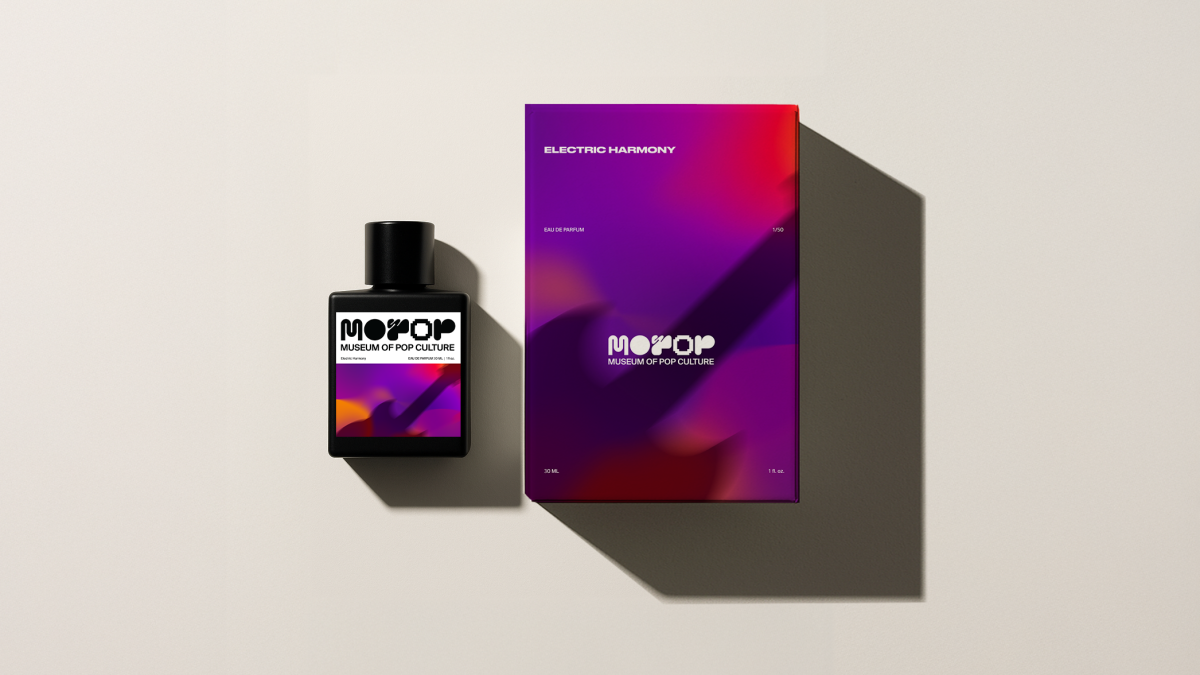
Photo: Courtesy of Generation by Osmo
It was an even quicker process for Michele Y. Smith, the CEO of the Museum of Pop Culture (MoPOP) in Seattle. To celebrate the institution's 25th anniversary, Smith wanted to create something that people could take home to remember their time spent gazing up at the museum's two-story guitar sculpture. (Created by the artist Trimpin, the visually arresting sculpture is a sonic cacophony made up of 500 guitars, in an ode to the roots of American music.) Naturally, Smith fed the OI platform a photo of the art, and while she didn't find a way to incorporate her favorite note of jasmine, perfumers led her to linden blossom instead. The result is Electric Harmony, MoPOP's first-ever signature scent, which was packaged and ready to be sold in less than two months.
"I think that's the beauty of AI, right?" says Smith. "If you look at Estée Lauder, one of the biggest perfume companies out there, they work on things for years. The platform really helped [perfumer] Christophe come up with the formula and test it in a quicker manner to launch a go-to-market product right away."
Of course, faster isn't always better. Traditional perfumes evolve over time, and if they're developed too quickly, formulas may not have enough time to undergo stability testing or aging observations. Which begs the question, how will these speedy scents from Generation by Osmo smell in months — or even years?
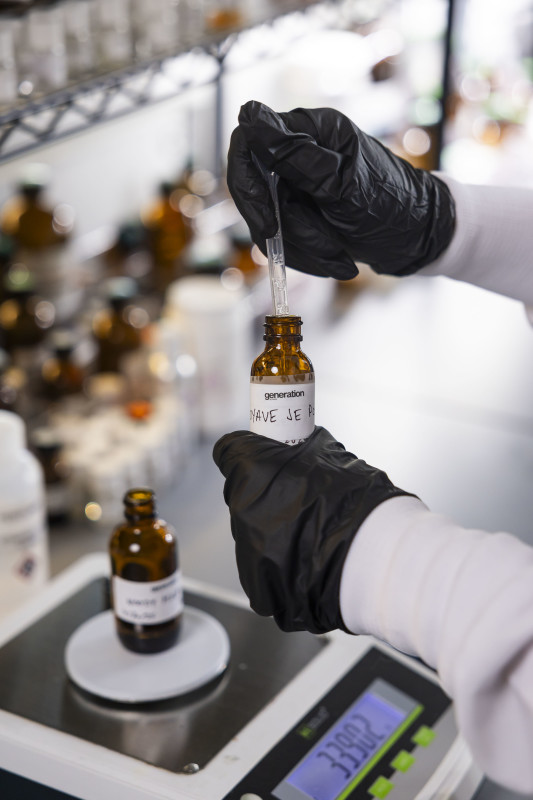
Photo: Courtesy of Generation by Osmo
Then there's the environmental impact of AI, and its contributions to electronic waste, greenhouse gas emissions and ecosystem harm. The company is well aware of these concerns. "We did a calculation for this on the energy usage," Wiltschko explains. "I believe the [environmental] cost of using OI to design a fragrance formula is about equal to the energy it takes to turn on an energy-efficient light bulb above the perfumer who'd be writing the formula themselves for 20 minutes, which is about how long it takes a perfumer to write a formula."
When it comes to accessibility, speed and production, Generation by Osmo is undeniably able to outperform the traditional fragrance giants. But rather than overthrowing the reigning, long-established processes and heritage of scent creation, Wiltschko sees the company's technology as a possible means of enhancing them. Why not incorporate some of the old with some of the new and see what results?
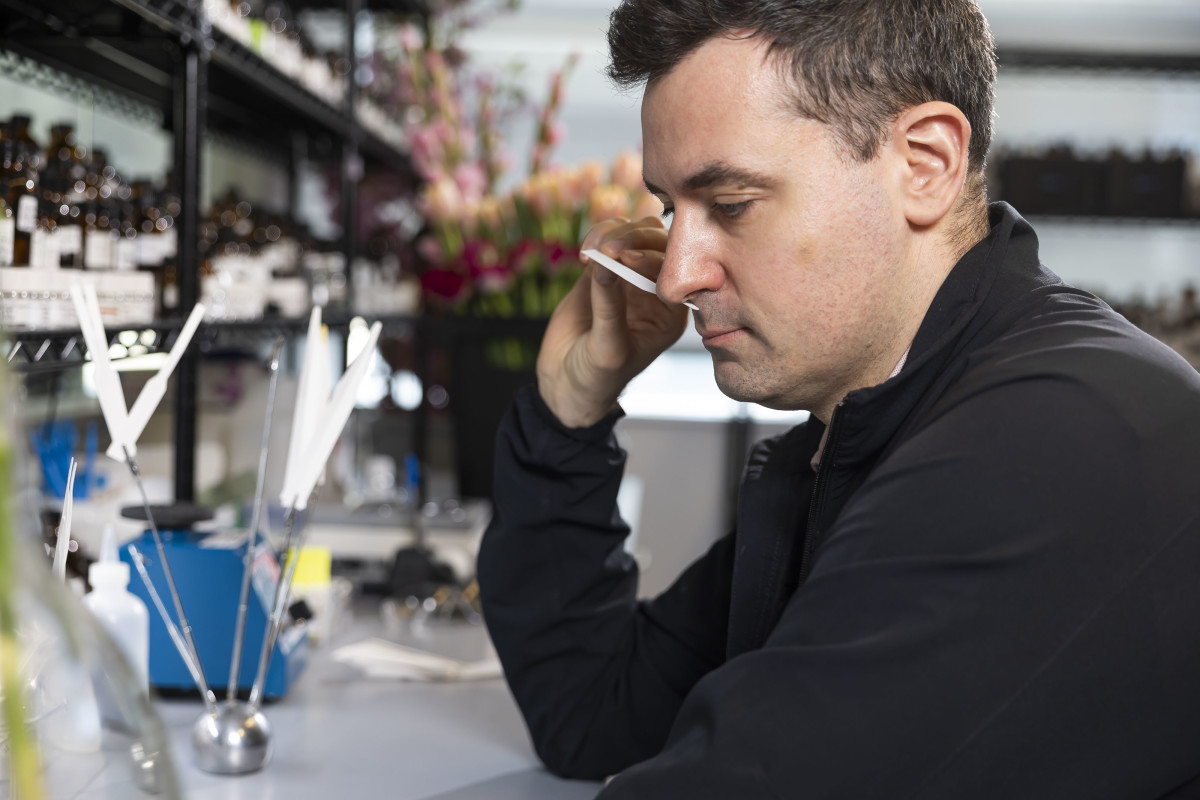
Photo: Courtesy of Generation by Osmo
He has a "rising tide lifts all ships" philosophy, and hopes Generation by Osmo will contribute to a richer, more varied and beautiful world of perfumes overall. In this way, OI can serve as a partner for creative olfactive expression, rather than a traditional "disruptor" of it: "How many paintings, how many photographs are there? Millions, hundreds of millions of unique creations. And I think the world's better because of that abundance. I think that scent is going to trend that way," he says.
Ultimately, he hopes that Generation by Osmo is going to serve a whole new class of creatives that don't even exist yet. "Today, there's 1,000 perfumers, and the world will always need and reward and value perfumers, just like the world always will reward and value and need Michelin-star chefs, people at the top of their craft. But there's people that have an urge and a right to create scents and aren't yet able to... Not only will there be millions or hundreds of millions of new scents in the world, but there will be millions of people who can design scents."
Please note: Occasionally, we use affiliate links on our site. This in no way affects our editorial decision-making.
📌 Love fashion? Follow us for daily updates on our fashion blog! 🌟
🔹 #FashionTrends #StyleTips #OOTD #Can Scent-Generating AI Technology Democratize the Notoriously Exclusive Fragrance Industry?
Comments
Post a Comment